The Gracia brothers & San Francisco Shipyard
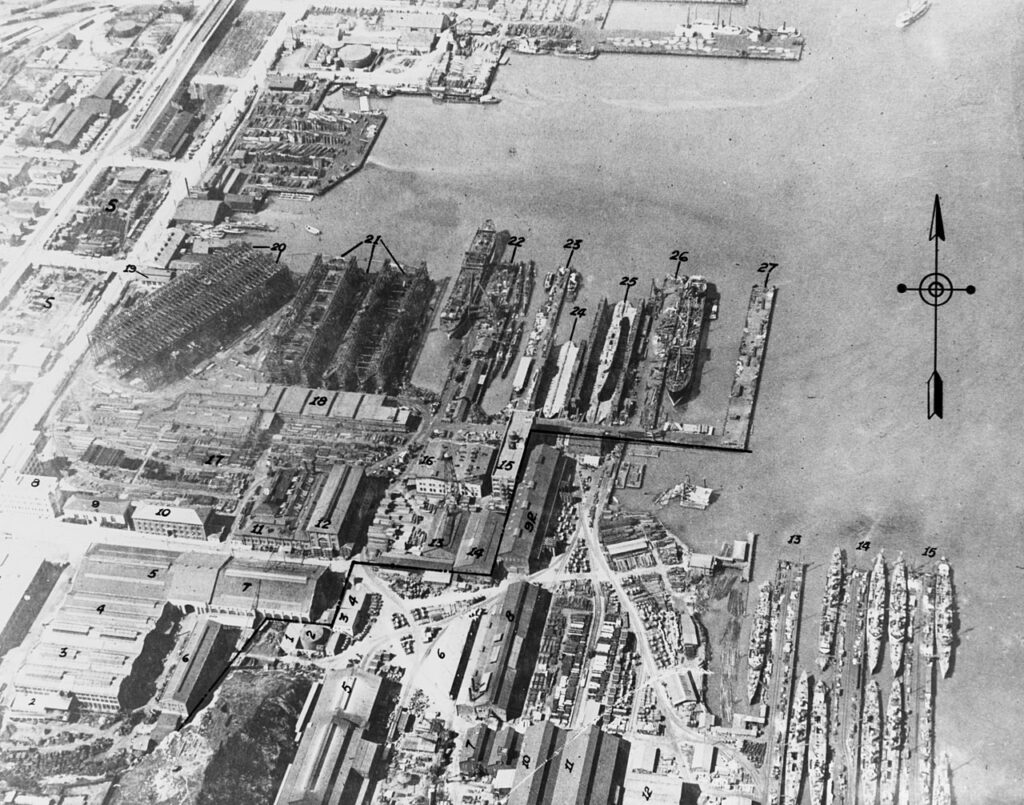
The third generation of the Gracia family in San Francisco all followed a common path in their occupations. Three out of four brothers became metal workers and six out of seven sisters became telephone operators.
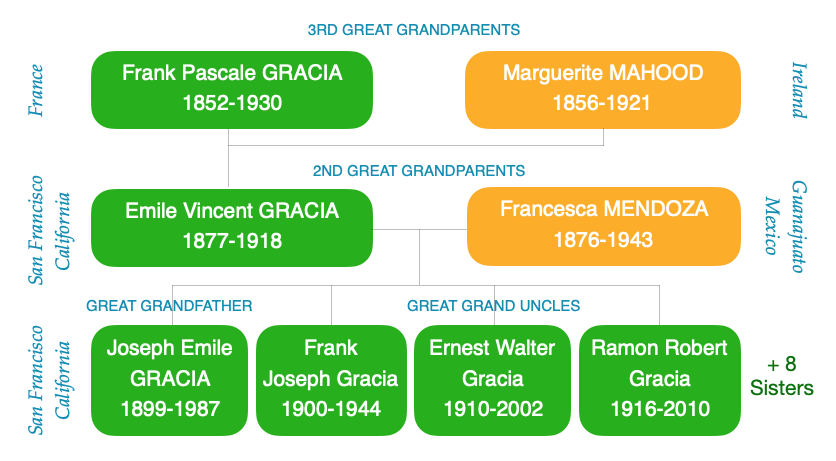
Their father, Emile Vincent GRACIA (1877-1918) died aged 41 from colon cancer, leaving his widow Frances with nine children under 18 years of age. The two elder sons shouldered the burden with Frank returning from Los Angeles to support the family.
The eldest son, Joseph Emile GRACIA (1899-1987), and his brother Frank John Gracia (1900-1944) both found work at the Bethlehem Shipbuilding Corp, Union Iron Works, in San Francisco. In 1916, the US Congress authorized a massive three-year shipbuilding program, with the aim of matching the largest navy in the world, the British Royal Navy. In addition to the cargo ships, tankers, ferries, and tugs, the shipyard delivered 84 military vessels between 1918-1924:
- 26 x Wickes-class Destroyers (1918-1920)
- 6 x R-class coastal and harbor defense submarines (1918)
- 12 x S-class submarines (1920-1924)
- 40 x Clemson-class Destroyers (1919-1921)
Curiously enough many of the Wickes-class & Clemson-class destroyers were transferred to the British Royal Navy in 1940 under terms of the destroyers-in-exchange-for-bases agreement. Fifty destroyers were supplied in total to the overwhelmed Commonwealth Navies battling the Axis powers.
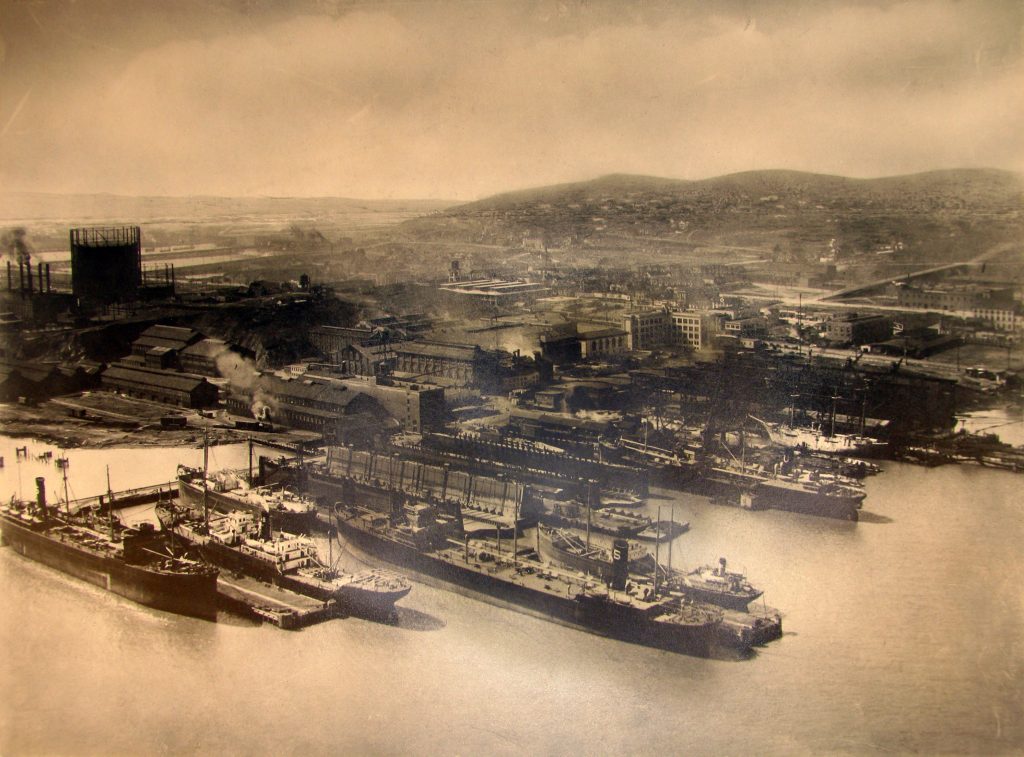
Joseph started as an assistant in 1918, moving up to Chipper and Caulker. In the 1920’s ship’s hulls were still riveted together and to ensure they were watertight the caulker would close down the edges of the plates and the heads of the rivets to form a metal to metal watertight joint.
Frank started as Holder On, part of the riveting team, who worked opposite the Riveter to keep the red hot rivet in place while the riveter compressed the heads with use of a pneumatic gun.
As the rivet cools and shrinks, the two metal plates and drawn even more tightly together. The riveting team would be followed by the chipper and caulker.
By 1918 the shipyard employed 10,000 workers. If you included the Bethlehem Shipyards in Alameda and Hunter’s Point, the total labor force was 25,000.

It was hard to find craftsmen with the skills to produce steel ships in a place where it had never been done before. [Shipyard owner] Irving M Scott said he never recruited machinists and other skilled workers from abroad, but many qualified shipyard workers found their way to his shipyard, from Scotland, Ireland, England, Germany, and elsewhere. And Scott created an apprenticeship program that employed young boys for four years at low wages in return for the promise of learning a skilled trade. The rules stated the boys must be 16, but many were probably younger…
…Working conditions were tough for industrial workers in the 19th and early 20th century, at the Union Iron Works shipyard as at other plants. Sixty hour weeks were the norm. Unionization was resisted fiercely by management. Pay was a little better at Union Iron Works than at most east coast yards because of the shortage of qualified workers. Management encouraged loyalty through sponsorship of athletic and social activities.
Ralph Wilson, History of Potrero Point Shipyards and Industry, Pier 70 San Francisco
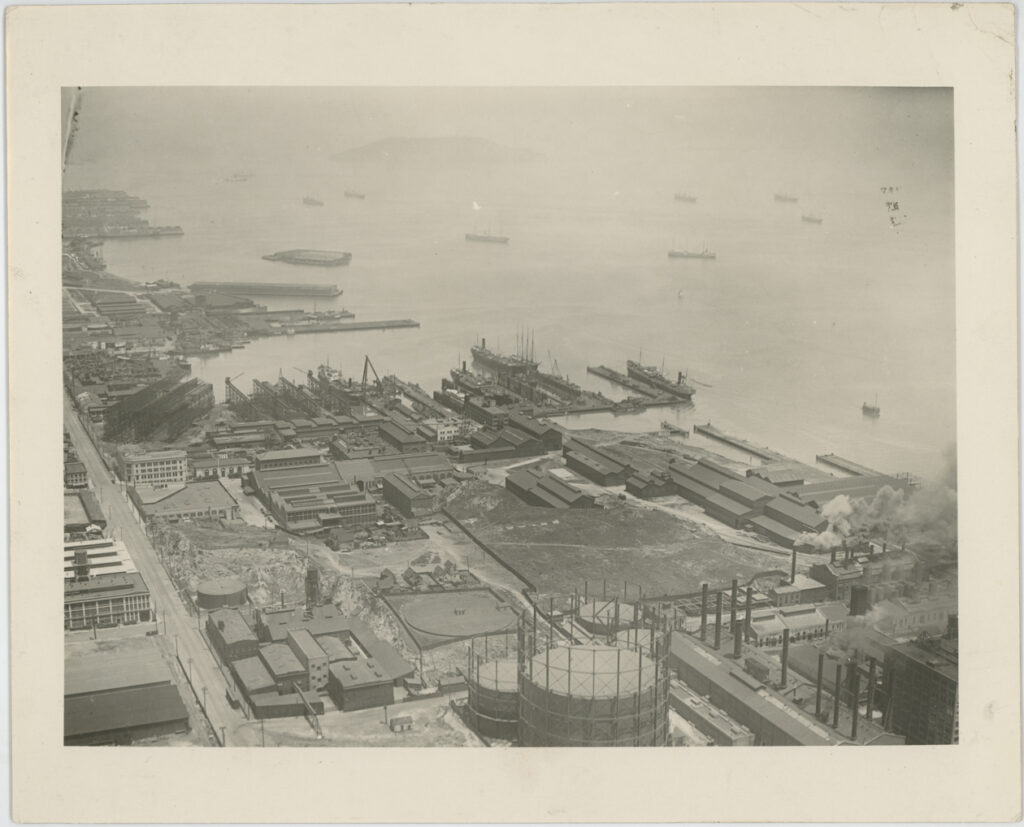
By 1940 Joseph, aged 40, had joined the San Francisco Police Department, working as hostler caring for the the department’s horses. Frank left the shipyard in his late 20’s in the late 1920’s and joined San Francisco’s Fire Department, initially as a hoseman but ultimately as ladder man. The third son, Ernest, remained in sheetmetal, returning to ACE Sheet Metal Works after serving with the US Army for the duration of WWII. The fourth and youngest son, Ramon, started in shower door installation, moved to industrial plating, and onto painting solutions in the late 1940’s.
Gracia Brothers
- Joseph Emile GRACIA (1899-1987)
- 1918 Assistant, Union Iron Works 18th & Third Street, SF
- 1920 Chipper & Caulker @ Navy Shipyard
- 1921 Laborer
- 1922-1935 Sheetmetal worker
- Frank John Gracia (1900-1944)
- 1920 Holder on @ Iron Works
- 1921 Slitter @ Iron Works
- 1922-1928 Knitter @ Iron works
- Ernest Walter Gracia (1910-2002)
- 1930 Sheet metal worker @ Blow Pipe Co
- 1940 Iron Work @ Blow Pipe Co.
- 1943 WWII Enlistment
- 1948 Sheet metal worker @ ACE sheet metal works
- Ramon Gracia (1916-2010)
- 1940 Shower door installer @ Shower door manufacturer
- 1944 Plater @ California Industrial Plating Co.
- 1948 @ WP Fuller & Co. (Paint Solutions)
Family Tree
- Marguerite (Maggie) Martha MAHOOD (1856-1921) & Francois Pascale Gracia (1852-1930)
- Emile Vincent GRACIA (1877-1918) & Francesca Juana Medina MENDOZA (1876-1943)
- Joseph Emile GRACIA (1899-1987) & Claire Kathleen GRANT (1905-1989)
- Joan Shirley GRACIA (1929-2021) & Henry James Victor MARCHETTI (1928-2014)
- Our direct line…
- Gracia (living)
- Joan Shirley GRACIA (1929-2021) & Henry James Victor MARCHETTI (1928-2014)
- Frank John Gracia (1900-1944)
- Doris Mildred Gracia (1901-1988)
- Elsie E Gracia (1902-1996)
- Irene Edna Gracia (1903-1995)
- Mary Helen Gracia (1905-1905)
- Hazel Aurelia Gracia (1907-2007)
- Frances Gladys Gracia (1909-1950)
- Ernest Walter Gracia (1910-2002)
- Helen (Elena) Lorraine Gracia (1912-1998)
- Evelyne Cecelia Gracia (1914-2000)
- Ramon Gracia (1916-2010)
- Joseph Emile GRACIA (1899-1987) & Claire Kathleen GRANT (1905-1989)
- Mildred Cleo Gracia (1879-1949)
- Daisy Florence Gracia (1882-1886)
- Ernest Leo Gracia (1889-1962)
- Frank G Gracia (1891-1956)
- Firmin C Gracia (1897-1918)
- William E Gracia (1901-1978)
- Emile Vincent GRACIA (1877-1918) & Francesca Juana Medina MENDOZA (1876-1943)
References
- Wikipedia: Bethlehem Shipbuilding Corporation
- Wikipedia: Union Iron Works
- Ship Building History: Bethlehem Shipbuilding Corp, San Francisco
- Testbook.com Chipper & Caulker & Fullering
- Museum of North Vancouver: A Riveted Community: North Vancouver’s Wartime Shipbuilding
- Wikipedia: Wickes-class Destroyers
- Wikipedia: R-class coastal and harbor defense submarines
- Wikipedia: S-class submarines
- Wikipedia: Clemson-class Destroyers
- NoeHill.com: National Register of Historic Places in San Francisco
- Pier 70 San Francisco: History of Potrero Point Shipyards and Industry
- Pier 70 San Francisco: Dogpatch Historical Context
- Flickr: National Register of Historic Buildings – Union Iron Works Historic District
- TreanorHL: Union Iron Works (Pier 70) National Register Nomination
- California in WW1: How Much Did California Contribute to Aviation & Naval Assets During WW1?
- California Preservation: Pier 70 – A Microcosm of American Shipbuilding
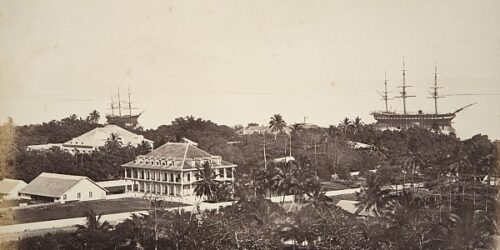
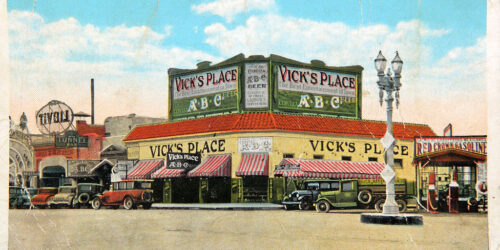


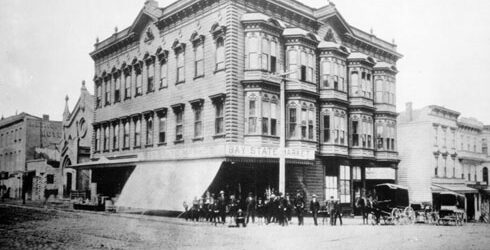
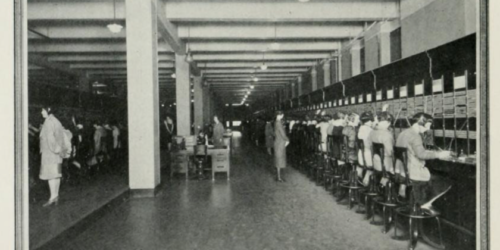
4 Responses